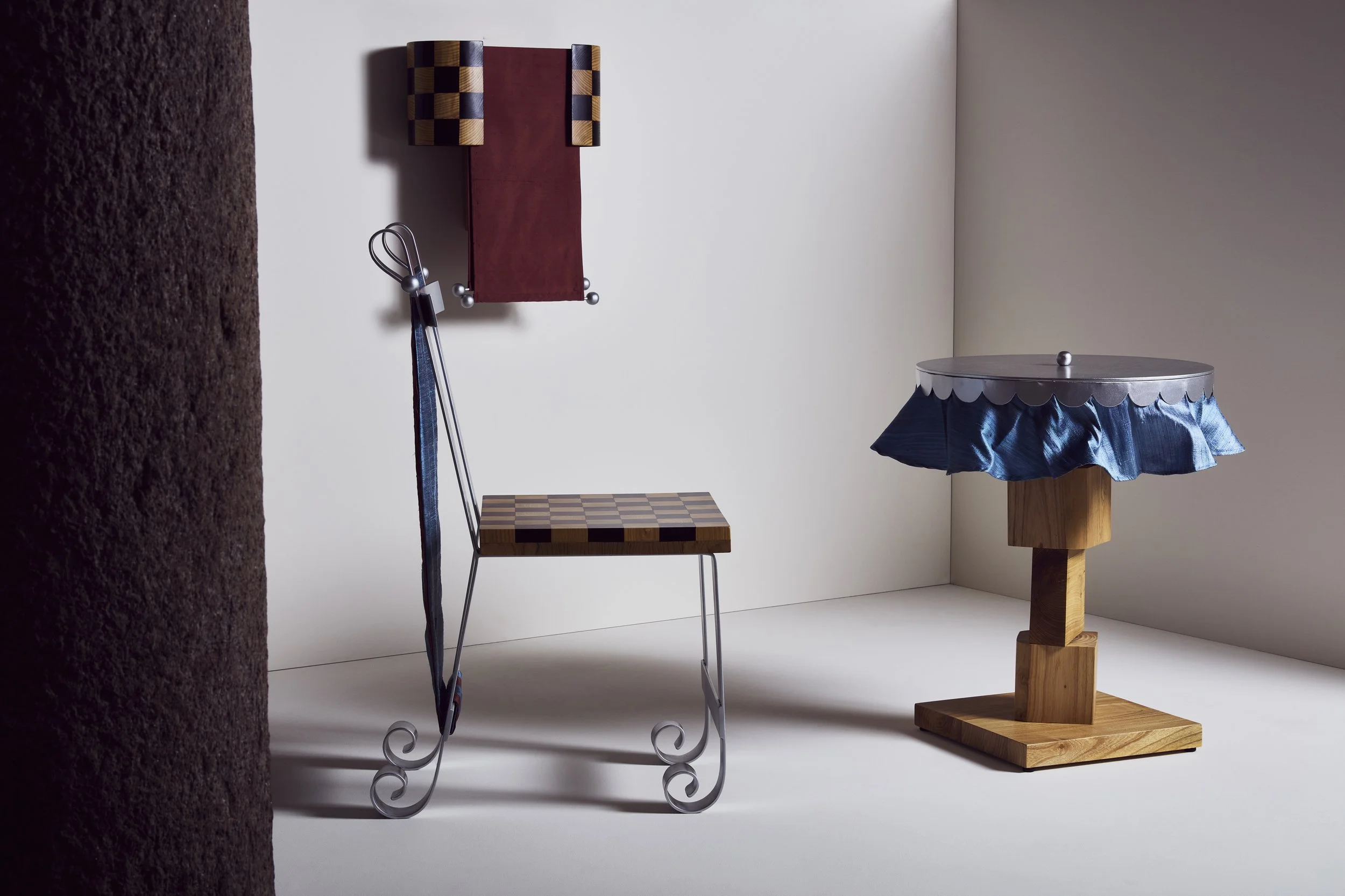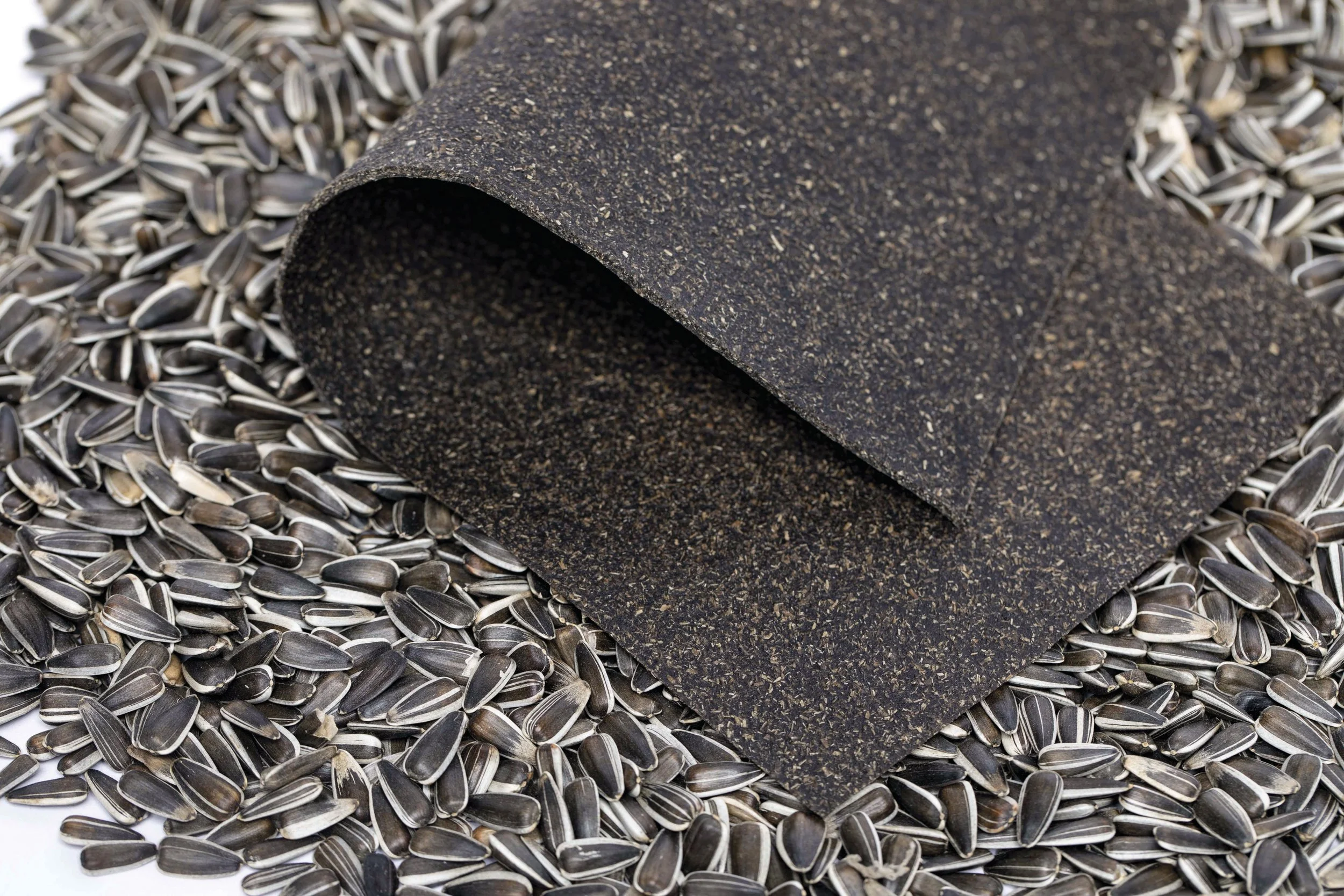Milan Design Week - Material Highlights
As we covered in our first colour-filled installment, Milan Design Week returned in April and it continues to be one of the biggest and most sought-after design shows of its kind. As well as those colourful creations there were also plenty of material highlights to be found among the myriad exhibitions, events, workshops, seminars, parties and pop-ups. And in keeping with Furiosalone’s Materia Natura theme, many of them continued to explore ways in which humans might manufacture more harmoniously with the natural world.
To make a collective impact in turning the tide on the environmental disasters that are unfolding across the planet will take systemic change; a baton that is being almost forced into the hands of younger generations. That is something being recognised by the staff and students at ECAL/University of Art and Design Lausanne, whose showing UPS - Under Pressure Solutions was a testament to. Inspired by Gaetano Pesce’s UP5 Chair, a piece designed in 1969 and made from polyurethane foam that expands when it’s unpacked, the team set out to experiment with more sustainable materials that share the same expansive and compressible qualities. Led by 5 Industrial Design tutors over a 2 year period, their research led them to a cellulose sponge derived from wood residues. As the team explains, “The material has remarkable properties: it is biodegradable and expands ten times its initial size on contact with moisture. The development of prototypes, based on numerous experiments highlighted the material’s versatility and strength, demonstrating its potential as a sustainable alternative for furniture production.” In a world dominated by e-commerce and the transportation of goods, the project opens the possibility of functional, lightweight furniture and objects made of biodegradable and renewal shape-memory foam.
Returning for the second year running, DesignSingapore Council bought a group of young designers for the next installment of Future Impact 2, and more sustainable practices were high on the agenda. Crafted from the Para rubber tree found in Singapore and Southeast Asia, design duo Christian+Jade explore ways to be less wasteful with rubber production in the creation of the Para Stool. The wood from the tree itself is usually burned after the extraction of the natural rubber, but here both substances are given a beautiful new lease of life.
Designer Faezah Shaharuddin ambitiously explores novel ways of sequestering carbon with furniture that incorporates offcuts of wood with textiles treated with COzTERRA. The formulation is produced by Singapore-based material engineers Xinterra, and allows the Unlikley Fragments collection to absorb carbon dioxide from the air.
While Genevieve Ang and Interactive Materials Lab have collaborated to expand the possibilities of ceramic with Reciproco, a set of objects that are capable of transferring heat from object to object. The process is intended to create a more meaningful connection with such objects, as the team explains, “Activated by touch, the ceramics are formulated with glass waste and enhanced with thermochromic paint that changes colour when the surface is heated. Visitors are invited to touch the designs and watch the technology come to life, as the work challenges boundaries between communication devices and bridges the emotional and physical gaps prevalent in our current digital communications.”
As we noted within our colour-spotting article, the Isola Design Festival, which this year operated under the This Future is Currently Unavailable banner, consistently showcases those who seek to challenge the status quo. One such practice is architecture and material design laboratory Studio8, who brought with them a selection of exciting material samples that offer a second life for waste. As we’ve been reporting, construction waste remains a big offender when it comes to production pollution and landfill waste. Matterpieces seeks to address the latter by intervening in the waste cycle and creating a new system in which materials such as glass, bricks, cement and tiles can be separated and reconstituted to form attractive and high-quality cladding materials.
Another waste-based project on display during Isola came from Peruvian designer Katherine Lopez, who focused her attention on an entirely different but still abundant material; sunflower seed husks. A byproduct of the sunflower oil industry, husks are ordinarily discarded, but within the Solio collection, they are transformed into soft, leatherlike material, Solio Soft, or a rigid surface rather appropriately known as Solio Solid.
The Made in Earth Collective sought to immerse visitors in ecological materials informed by the landscape of their native India along with many of the indigenous practices that are still used to this day. The Future Will be Sown exhibition aimed to shine on spotlight on the positive application of natural and bio-sourced materials such as loofah sponges, while offering the chance to connect with a wider international audience.
Fellow Isola exhibitor Emma Johann has turned her attention to the plight of a living creature in the natural world; the life-giving but endangered bee. Recognising the numerous humanmade impacts upon their habitats, the Buzzz facade system looks to readdress the balance and offer a safe haven for the winged pollunaters within the built environment. The perforated modular tiles transform the vertical landscape of new builds into a bee habitat, thus creating homes for people and insects alike.
At first glance, the organic forms adorning the walls and ceiling of the Villa Bagatti Valsecchi designed by Alvaro Catalán de Ocón could easily have been mistaken for the homes of another striped insect; the wasp. In fact, the woven wall hangings and lighting are the industrious output of The Baba Tree Basket Company from Ghana and the technical industrial design of the PET Lamp project. Calling upon the former’s rich cultural weaving tradition, the collaborative pieces serve to save waste from landfill, in this case, PET plastic.
Another unusual sculptural form could be spotted in the grounds of Villa Borsani, the second home of the Alcova exhibition. Sonic Currents by Brogen Berwick and Lana Bolkvadze uses the flow of water to physically highlight ever-increasing noise pollution. The organic ceramic piece is fed by a series of plastic tubes that create a flow of water. The fountain is designed to respond and react to data collected from underwater noise, which in turn informs the volume and flow of the water, thus creating a visceral response in the viewer.
Fellow Alcova exhibitors Foteini Setaki & Panos Sakkas also produce oddly twisted and morphed 3D forms with The New Raw collection. The Rotterdam studio utilise recycled plastic, which is 3D-printed to create slumped and tactile objects that expand the possibilities of digital fabrication. While Harry Thaler has teamed up with econitWood to create Printed Nature, a set of tall lamps 3D printed from the novel material derived from wood waste.












